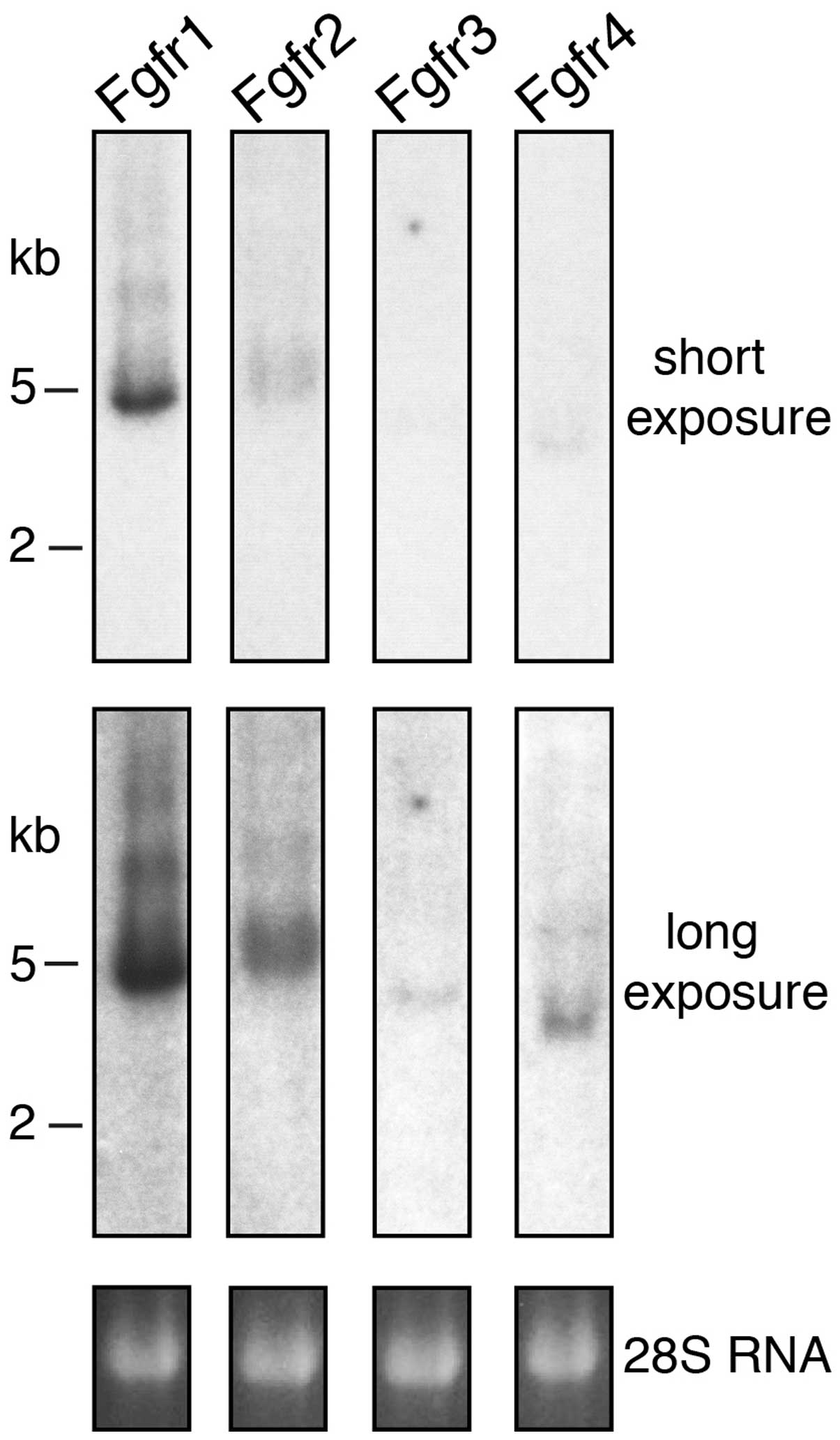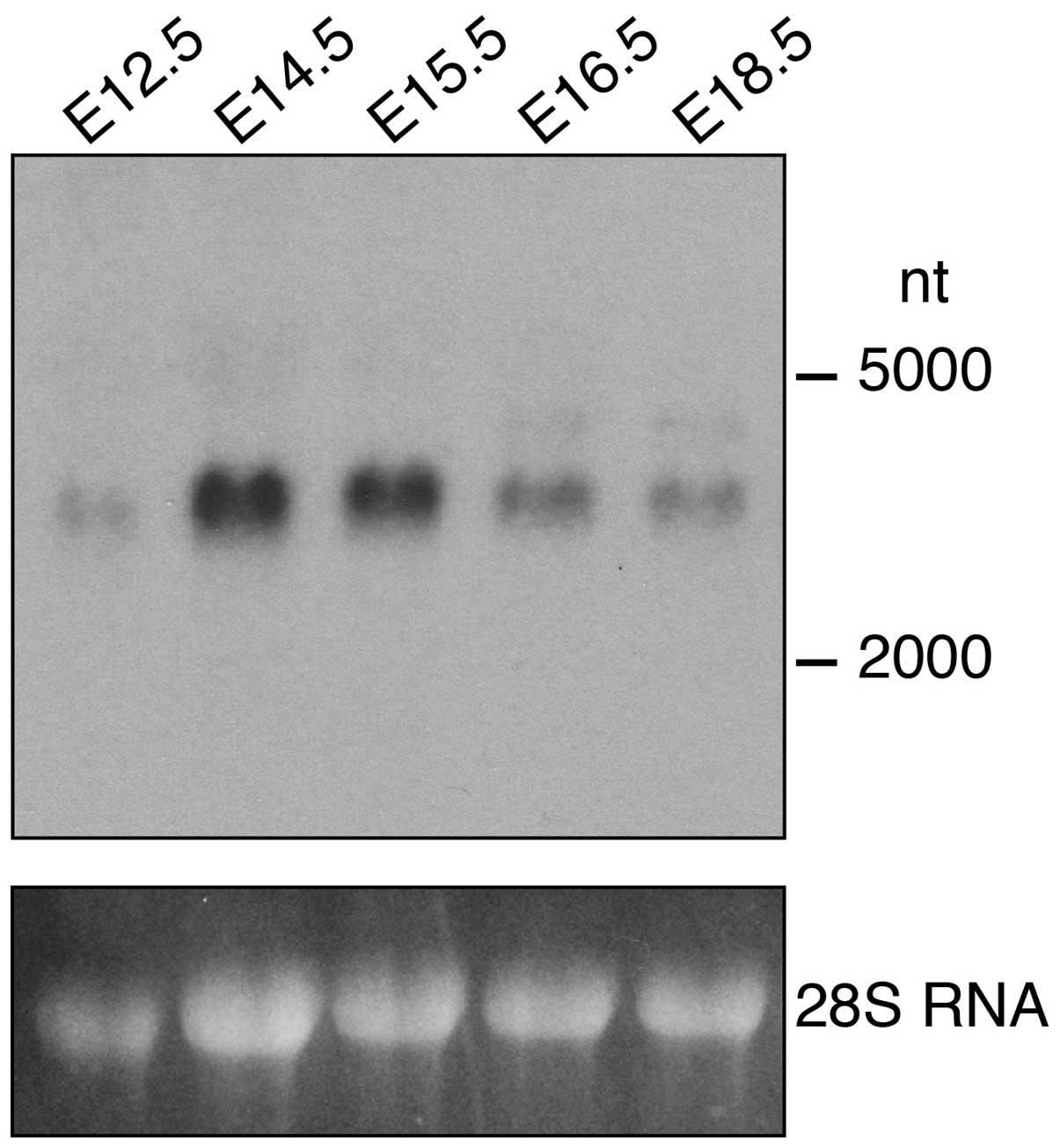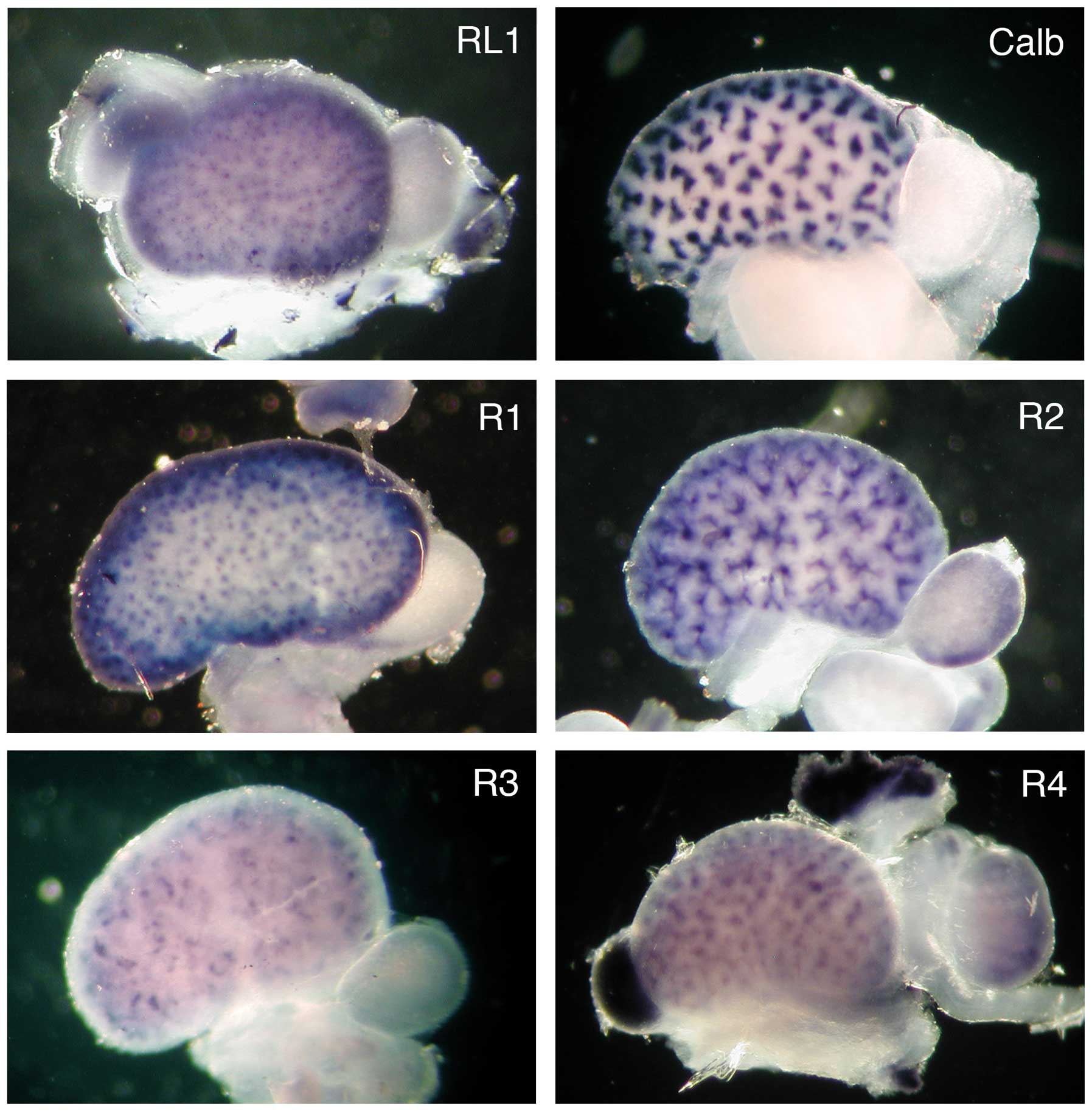|
1
|
Itoh N: The Fgf families in humans, mice,
and zebrafish: their evolutional processes and roles in
development, metabolism, and disease. Biol Pharm Bull.
30:1819–1825. 2007. View Article : Google Scholar : PubMed/NCBI
|
|
2
|
Beenken A and Mohammadi M: The FGF family:
biology, pathophysiology and therapy. Nat Rev Drug Discov.
8:235–253. 2009. View
Article : Google Scholar : PubMed/NCBI
|
|
3
|
Costantini F and Kopan R: Patterning a
complex organ: branching morphogenesis and nephron segmentation in
kidney development. Dev Cell. 18:698–712. 2010. View Article : Google Scholar : PubMed/NCBI
|
|
4
|
Hendry C, Rumballe B, Moritz K and Little
MH: Defining and redefining the nephron progenitor population.
Pediatr Nephrol. 26:1395–1406. 2011. View Article : Google Scholar : PubMed/NCBI
|
|
5
|
Brown AC, Adams D, de Caestecker M, Yang
X, Friesel R and Oxburgh L: FGF/EGF signaling regulates the renewal
of early nephron progenitors during embryonic development.
Development. 138:5099–5112. 2011. View Article : Google Scholar : PubMed/NCBI
|
|
6
|
Wiedemann M and Trueb B: Characterization
of a novel protein (FGFRL1) from human cartilage related to FGF
receptors. Genomics. 69:275–279. 2000. View Article : Google Scholar : PubMed/NCBI
|
|
7
|
Trueb B, Zhuang L, Taeschler S and
Wiedemann M: Characterization of FGFRL1, a novel FGF receptor
preferentially expressed in skeletal tissues. J Biol Chem.
278:33857–33865. 2003. View Article : Google Scholar : PubMed/NCBI
|
|
8
|
Sleeman M, Fraser J, McDonald M, Yuan S,
White D, Grandison P, Kumble K, Watson JD and Murison JG:
Identification of a new fibroblast growth factor receptor, FGFR5.
Gene. 271:171–182. 2001. View Article : Google Scholar : PubMed/NCBI
|
|
9
|
Wiedemann M and Trueb B: The mouse Fgfrl1
gene coding for a novel FGF receptor–like protein. Biochim Biophys
Acta. 1520:247–250. 2001.PubMed/NCBI
|
|
10
|
Trueb B: Biology of FGFRL1, the fifth
fibroblast growth factor receptor. Cell Mol Life Sci. 68:951–964.
2011. View Article : Google Scholar : PubMed/NCBI
|
|
11
|
Baertschi S, Zhuang L and Trueb B: Mice
with a targeted disruption of the FgfrL1 gene die at birth due to
alterations in the diaphragm. FEBS J. 274:6241–6253. 2007.
View Article : Google Scholar : PubMed/NCBI
|
|
12
|
Catela C, Bilbao-Cortes D, Slonimsky E,
Kratsios P, Rosenthal N and Te Welscher P: Multiple congenital
malformations of Wolf-Hirschhorn syndrome are recapitulated in
Fgfrl1 null mice. Dis Model Mech. 2:283–294. 2009. View Article : Google Scholar : PubMed/NCBI
|
|
13
|
Gerber SD, Steinberg F, Beyeler M,
Villiger PM and Trueb B: The murine FgfrL1 receptor is essential
for the development of the metanephric kidney. Dev Biol.
335:106–119. 2009. View Article : Google Scholar : PubMed/NCBI
|
|
14
|
Gerber SD, Amann R, Wyder S and Trueb B:
Comparison of the gene expression profiles from normal and FgfrL1
deficient mouse kidneys reveals downstream targets of FgfrL1
signaling. PLoS One. 7:e334572012. View Article : Google Scholar : PubMed/NCBI
|
|
15
|
Trueb B, Amann R and Gerber SD: Role of
FGFRL1 and other FGF signaling proteins in early kidney
development. Cell Mol Life Sci. 70:2505–2518. 2013. View Article : Google Scholar : PubMed/NCBI
|
|
16
|
Steinberg F, Zhuang L, Beyeler M, Kälin
RE, Mullis PE, Brändli AW and Trueb B: The FGFRL1 receptor is shed
from cell membranes, binds fibroblast growth factors (FGFs) and
antagonizes FGF signaling in Xenopus embryos. J Biol Chem.
285:2193–2202. 2010. View Article : Google Scholar : PubMed/NCBI
|
|
17
|
Grieshammer U, Cebrian C, Ilagan R, Meyers
E, Herzlinger D and Martin GR: FGF8 is required for cell survival
at distinct stages of nephrogenesis and for regulation of gene
expression in nascent nephrons. Development. 132:3847–3857. 2005.
View Article : Google Scholar : PubMed/NCBI
|
|
18
|
Perantoni AO, Timofeeva O, Naillat F,
Richman C, Pajni-Underwood S, Wilson C, Vainio S, Dove LF and
Lewandoski M: Inactivation of FGF8 in early mesoderm reveals an
essential role in kidney development. Development. 132:3859–3871.
2005. View Article : Google Scholar : PubMed/NCBI
|
|
19
|
Colvin JS, Bohne BA, Harding GW, McEwen DG
and Ornitz DM: Skeletal overgrowth and deafness in mice lacking
fibroblast growth factor receptor 3. Nat Genet. 12:390–397. 1996.
View Article : Google Scholar : PubMed/NCBI
|
|
20
|
Weinstein M, Xu X, Ohyama K and Deng CX:
FGFR-3 and FGFR-4 function cooperatively to direct alveogenesis in
the murine lung. Development. 125:3615–3623. 1998.PubMed/NCBI
|
|
21
|
Deng CX, Wynshaw-Boris A, Shen MM,
Daugherty C, Ornitz DM and Leder P: Murine FGFR-1 is required for
early postimplantation growth and axial organization. Genes Dev.
8:3045–3057. 1994. View Article : Google Scholar : PubMed/NCBI
|
|
22
|
Yamaguchi TP, Harpal K, Henkemeyer M and
Rossant J: Fgfr-1 is required for embryonic growth and mesodermal
patterning during mouse gastrulation. Genes Dev. 8:3032–3044. 1994.
View Article : Google Scholar : PubMed/NCBI
|
|
23
|
Xu X, Weinstein M, Li C, Naski M, Cohen
RI, Ornitz DM, Leder P and Deng C: Fibroblast growth factor
receptor 2 (FGFR2)-mediated reciprocal regulation loop between FGF8
and FGF10 is essential for limb induction. Development.
125:753–765. 1998.PubMed/NCBI
|
|
24
|
Arman E, Haffner-Krausz R, Chen Y, Heath
JK and Lonai P: Targeted disruption of fibroblast growth factor
(FGF) receptor 2 suggests a role for FGF signaling in
pregastrulation mammalian development. Proc Natl Acad Sci USA.
95:5082–5087. 1998. View Article : Google Scholar : PubMed/NCBI
|
|
25
|
Poladia DP, Kish K, Kutay B, Hains D, Kegg
H, Zhao H and Bates CM: Role of fibroblast growth factor receptors
1 and 2 in the metanephric mesenchyme. Dev Biol. 291:325–339. 2006.
View Article : Google Scholar : PubMed/NCBI
|
|
26
|
Zhao H, Kegg H, Grady S, Truong HT,
Robinson ML, Baum M and Bates CM: Role of fibroblast growth factor
receptors 1 and 2 in the ureteric bud. Dev Biol. 276:403–415. 2004.
View Article : Google Scholar : PubMed/NCBI
|
|
27
|
Bates CM: Role of fibroblast growth factor
receptor signaling in kidney development. Am J Physiol Renal
Physiol. 301:F245–F251. 2011. View Article : Google Scholar : PubMed/NCBI
|
|
28
|
Rieckmann T, Kotevic I and Trueb B: The
cell surface receptor FGFRL1 forms constitutive dimers that promote
cell adhesion. Exp Cell Res. 314:1071–1081. 2008. View Article : Google Scholar : PubMed/NCBI
|
|
29
|
Steinberg F, Gerber S, Rieckmann T and
Trueb B: Rapid fusion and syncytium formation of heterologous cells
upon expression of the FGFRL1 receptor. J Biol Chem.
285:37704–37715. 2010. View Article : Google Scholar : PubMed/NCBI
|












